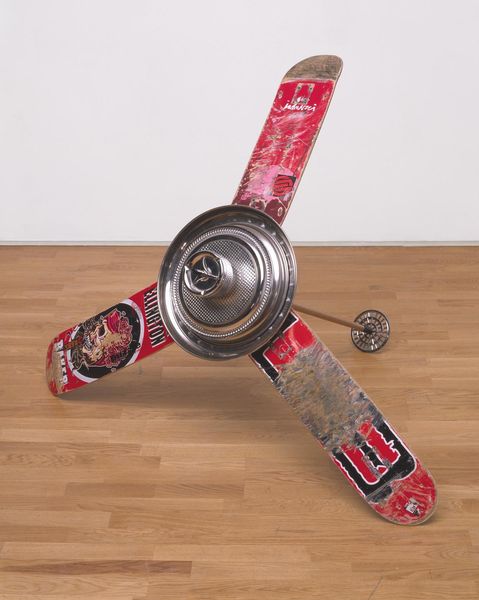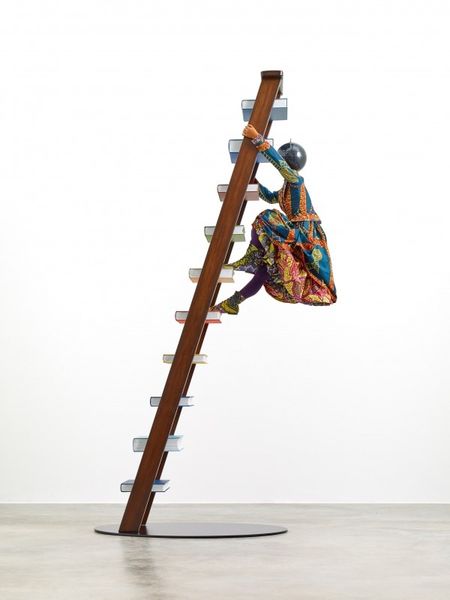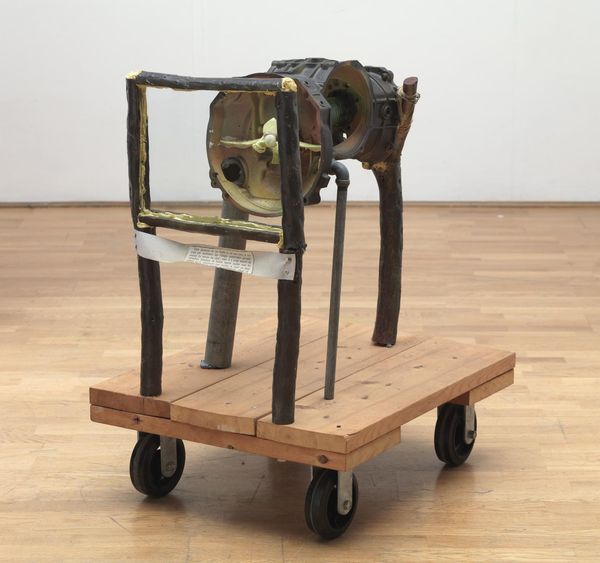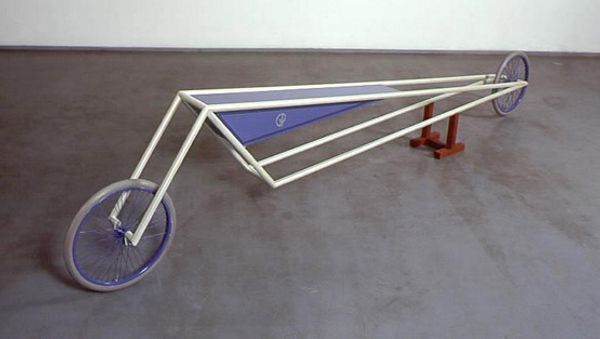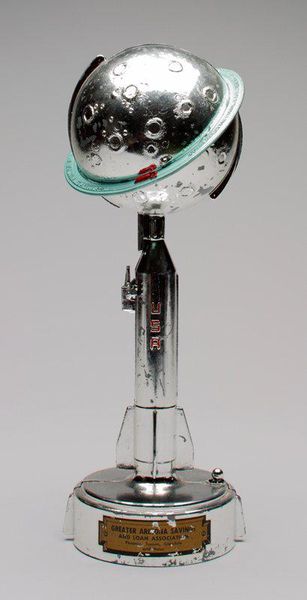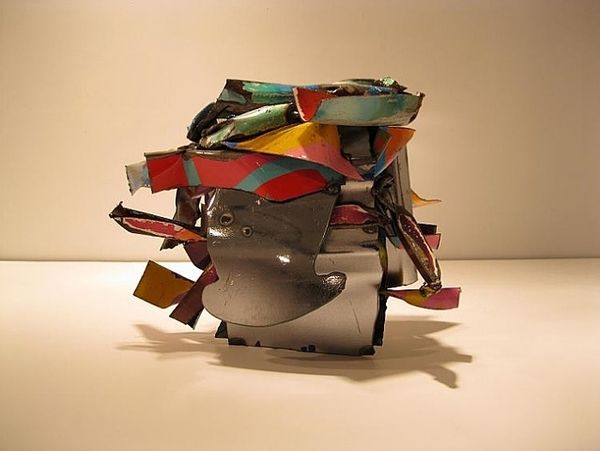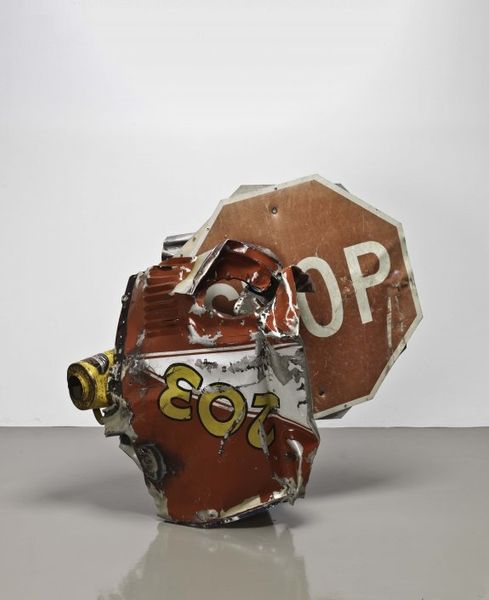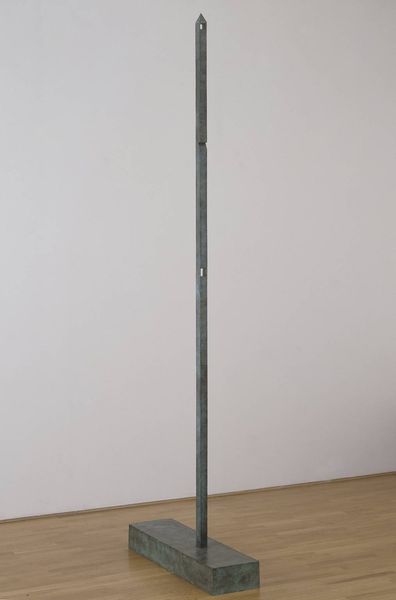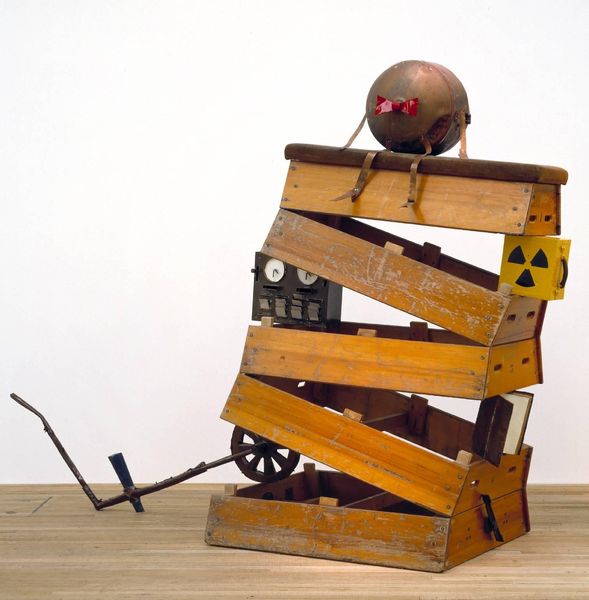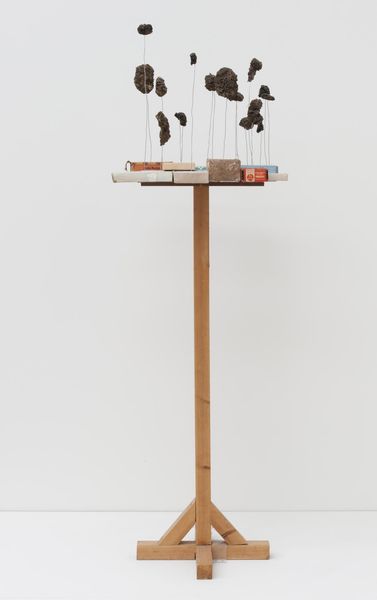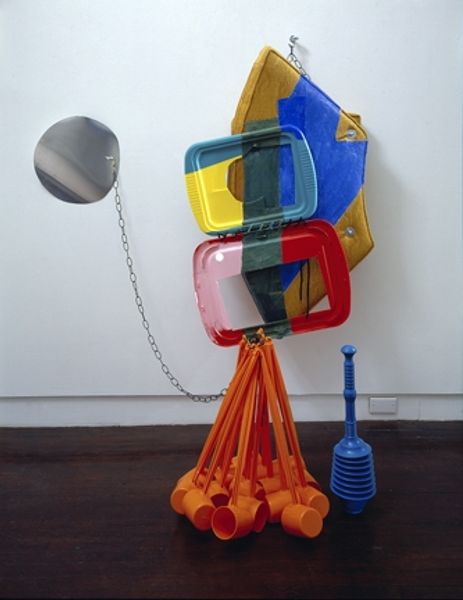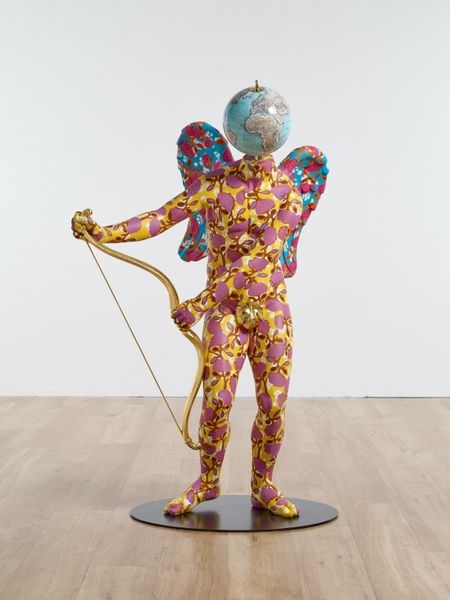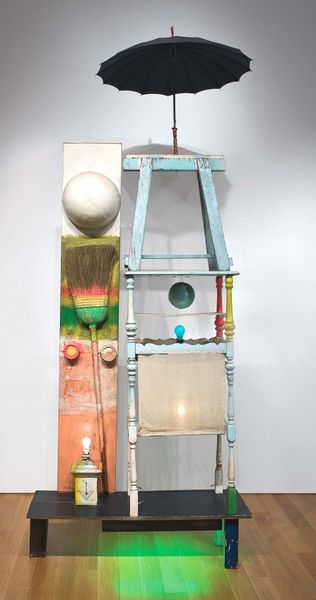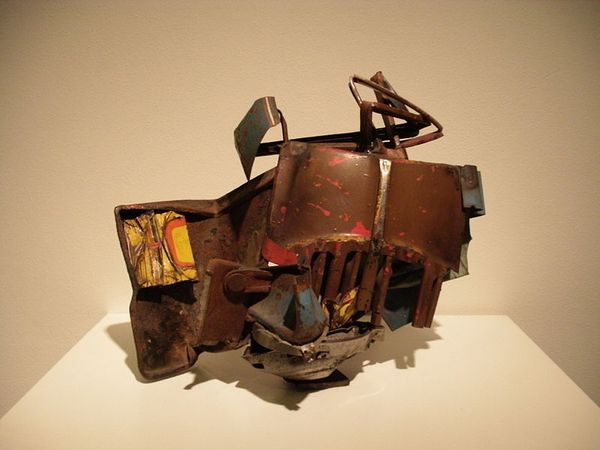
Dimensions: object: 1035 x 1350 x 1045 mm
Copyright: © Alexandre da Cunha | CC-BY-NC-ND 4.0 DEED, Photo: Tate
Editor: This intriguing piece is Alexandre da Cunha's "Skateboarderistismatronics (fan)". It looks like it is constructed from skateboards and kitchenware! What’s your take on this? Curator: The repurposing of mass-produced skateboards and humble kitchen bowls challenges the traditional hierarchy between art and everyday objects. Consider the labor involved, the wear and tear on those skateboards, the act of their consumption. Editor: So it's the commentary on consumerism and labor that's key here? Curator: Precisely. The act of re-contextualizing these materials draws attention to their original purpose, production, and subsequent transformation into art. What statement do you think da Cunha is trying to make? Editor: I see it as turning discarded items into something new, giving them value. Curator: Exactly. A transformation through material manipulation and artistic intervention. Thanks! Editor: I see it too, thank you!
Comments
tate 7 months ago
⋮
http://www.tate.org.uk/art/artworks/cunha-skateboarderistismatronics-fan-t12173
Join the conversation
Join millions of artists and users on Artera today and experience the ultimate creative platform.
tate 7 months ago
⋮
Skateboarderistismatronics (fan) 2004 is a floor-based sculpture by the British-Brazilian artist Alexandre da Cunha that comprises three skateboards with their wheels removed arranged in a three-armed configuration to resemble a domestic ceiling fan. At the centre of the work, four lightweight metal objects – a cake mould, a salad bowl, a circular baking tray and a film canister lid – are threaded onto a plastic-covered metal broom handle using a series of wing nuts and bolts. The work is balanced on the floor, with two of the skateboards touching the ground and a third support provided by the lower end of the broom handle, onto which is attached another, smaller metal ring mould.
